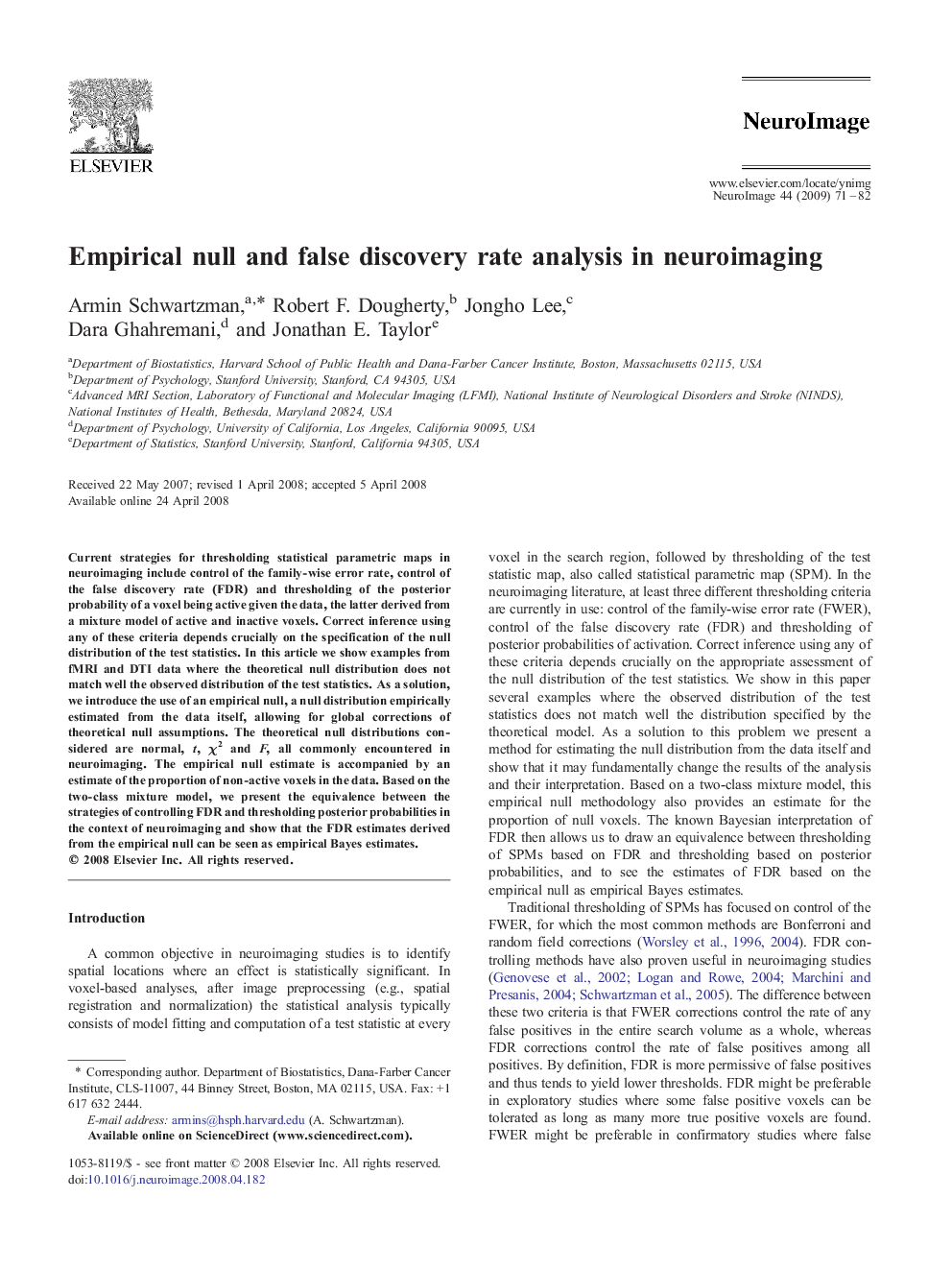| کد مقاله | کد نشریه | سال انتشار | مقاله انگلیسی | نسخه تمام متن |
|---|---|---|---|---|
| 3072763 | 1188804 | 2009 | 12 صفحه PDF | دانلود رایگان |

Current strategies for thresholding statistical parametric maps in neuroimaging include control of the family-wise error rate, control of the false discovery rate (FDR) and thresholding of the posterior probability of a voxel being active given the data, the latter derived from a mixture model of active and inactive voxels. Correct inference using any of these criteria depends crucially on the specification of the null distribution of the test statistics. In this article we show examples from fMRI and DTI data where the theoretical null distribution does not match well the observed distribution of the test statistics. As a solution, we introduce the use of an empirical null, a null distribution empirically estimated from the data itself, allowing for global corrections of theoretical null assumptions. The theoretical null distributions considered are normal, t, χ2 and F, all commonly encountered in neuroimaging. The empirical null estimate is accompanied by an estimate of the proportion of non-active voxels in the data. Based on the two-class mixture model, we present the equivalence between the strategies of controlling FDR and thresholding posterior probabilities in the context of neuroimaging and show that the FDR estimates derived from the empirical null can be seen as empirical Bayes estimates.
Journal: NeuroImage - Volume 44, Issue 1, 1 January 2009, Pages 71–82